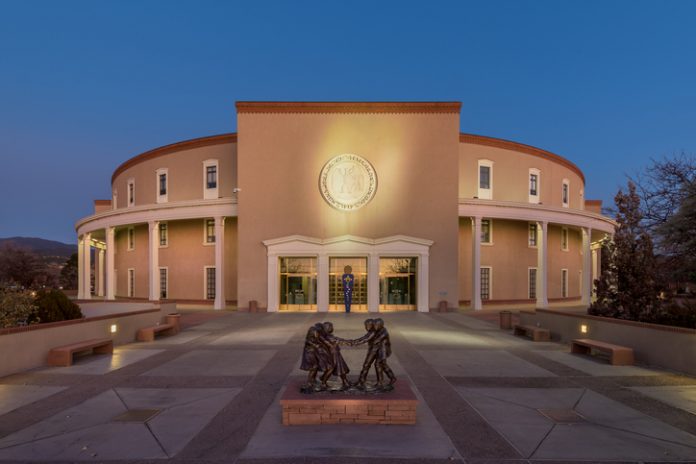By Tom Joyce
(The Center Square) – New Mexico Governor Michelle Lujan Grisham announced a water storage supply strategy that she hopes will improve drought resilience while advancing clean energy storage and production at the 2023 United Nations Climate Change Conference in Dubai on Tuesday.
The governor thinks the water supply strategy will help provide resources for creating green hydrogen, storing energy produced by wind and solar, and manufacturing electric vehicles, microchips, solar panels, and wind turbines.
“In arid states like ours, every drop counts. A warming climate throws that fact into sharper relief every day,” Lujan Grisham said. “This is innovation in action: We’re leveraging the private sector to strengthen our climate resiliency and protect our precious freshwater resources.”
Lujan Grisham blamed global warming for water shortages in the Southwestern United States.
“Consequently, some of our reservoirs and groundwater supplies are critically low and not recharging at sufficient rates to ensure future water security,” the release said. “In Albuquerque, the Rio Grande went dry for the first time in four decades in August 2022. Such events illustrate how current water supplies are not matched for future demand, where climate models predict up to a 25% reduction in available water across the state.
New Mexico plans to spend $500 million on treated brackish and treated produced water to build the ‘strategic’ water supply.
Early in 2024, the New Mexico Environment Department will provide guidance and seek proposals from companies interested in pursuing a contract.
“This contracting model, used in other industries like healthcare for manufacturing vaccines, is known as an advanced market commitment,” a release said. “Advanced market commitments reduce the risk of private sector investment and spur first movers to build otherwise costly infrastructure. Companies that are awarded an advanced market commitment contract can secure private capital to build and operate water treatment facilities with the assurance the State of New Mexico will purchase the water. Then, the state will make the water available for creating green hydrogen; storing energy produced by wind and solar; manufacturing electric vehicles, microchips, solar panels, and wind turbines; and other uses as treatment and demand allow.”
While the governor’s office touts this as a new idea, critics argue it is nothing new.
“It is good to see Governor Lujan has realized the value of storing water, something Roman architects and emperors like Justinian were doing 1500 and more years ago,” Ian Murray, a senior fellow at the Competitive Enterprise Institute told The Center Square.
New Mexico is above substantial aquifers of brackish water. However, they cannot be used for human or agricultural consumption without treatment. There could be between two and four billion acre-feet of brackish water underneath New Mexico, the release said.
Theoretically, a 25 million gallon per day brackish water treatment plant could produce up to 27,900 acre-feet of potable water annually. It would cover approximately 70% of the annual consumptive water use in the Albuquerque area, about 40,000 acre-feet.
Additionally, oil and gas operations generated over two billion barrels of produced water in 2022. Of that, 1.2 billion barrels were injected into deep wells for permanent disposal in New Mexico.
“Diverting just 3% of the produced water disposed of in injection wells to make hydrogen could result in enough energy to fully power over 2 million homes annually,” the release claimed.
The governor plans to seek the $500 million in non-general fund dollars. It will include $250 million in the upcoming legislative session and $250 million in the 2025 session. The funding would come from severance taxes the state charges on oil, gas, and other natural resources that come from the ground.
“Strategically locating brackish and produced water treatment facilities around the state can offset demand for freshwater,” the release said. “In the future, the development of science-based regulatory standards may allow for expanded uses of treated water from the strategic water supply.”
Tom Joyce is a contributor at The Center Square.
Originally published by The Center Square. Republished with permission.
To read more about water management issues, click here.


























